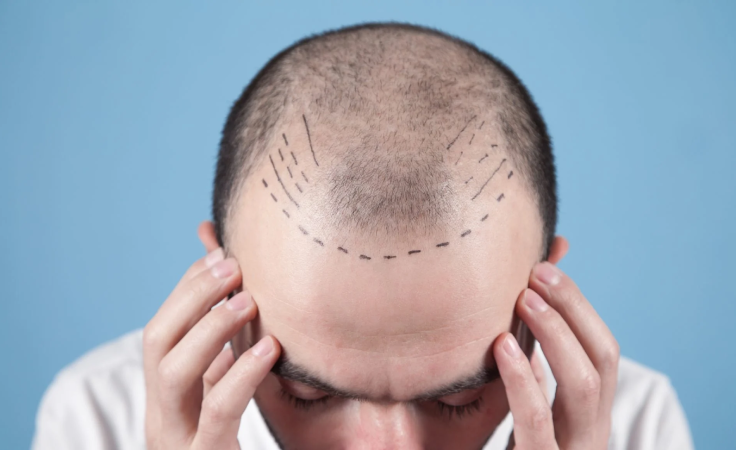
Hair Transplant
By age 50, most men-and women are affected by hair loss. It is so common in men that it is actually accepted as normal. Androgenic alopecia in females is an increasingly frequent problem based on heredity and hormonal change. Micro-hair transplantation is a state-of-the-art hair transplantation technique that has replaced “plugs” or larger grafts of hair.
Alopecia areata is an autoimmune hair cycle shift that can be present in any area of the scalp, including donor areas, so that all scalp hairs may be involved, leaving no healthy donor follicles. It also resolves with medication and topical therapy, with hair regrowth in most instances. Diffuse female alopecia also involves the entire scalp and thus is not amenable to hair transplantation.
Indications
Indications for hair transplantation include androgenic alopecia, male pattern alopecia, cicatricial alopecia, traumatic alopecia, and traction alopecia.
Technique
Most micro-hair transplant procedures (individual hair micrograft restorations) use local anesthesia and are performed on an outpatient basis. Other procedures such as flap surgery require general anesthesia and are performed in a surgical setting. After approximately six weeks, the transplanted hair will fall out and be replaced about three months later when the new hair grows in. To achieve sufficient density, several sessions may be required. Transplantation is a progressive process requiring hundreds of micro-grafts, each of which will generally contain from one to three hairs mini-grafted from a donor site on the side or back of the head. They are randomly implanted in the bald (or thinning) area so that they will grow in a natural pattern.
Benifits
Procedure is permanent. Once the transplant procedures are complete, there is no further necessity for surgery.
Restores a natural, more youthful and vigorous look, with potentially positive psychological effects, such as a boost in confidence.
Other Considerations
Must have availability of healthy hair in donor areas of adequate density.
Time-consuming process that may require multiple sessions over 1 to 2 years.
Procedure involves some degree of minor discomfort, bruising and swelling.
There may be numbness around the donor or recipient site, which generally disappears within 2 to 3 months.
Several days are required before normal activities can be resumed.
Patient should not have unrealistic expectations about the nature and extent of transplanted hair growth. Individual hair characteristics, such as coarseness and curl, can affect the possible density of transplanted hair.
Survival of transplanted hair is not always predictable.
Contraindications
Specific contraindications to this procedure include diffuse female pattern baldness, non–donor-dominant alopecia, and alopecia areata. The scarring alopecias are nondominant and while active, do not respond to hair transplantation. These include discoid lupus erythematosus, lichen planopilaris, and other cicatricial alopecia.
 WhatsApp
WhatsApp